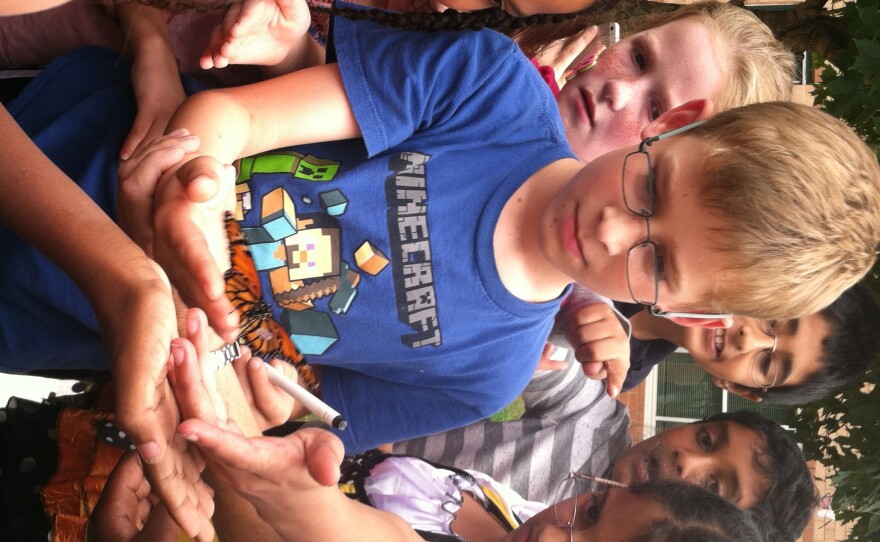Kindergarten and fourth-grade students at Barringer Academic Center in Charlotte spent the last few months learning about the life cycle and migration patterns of the Monarch butterfly.
The Monarch is well known for its bright orange and black wings, but also for its annual migration from Mexico to Canada – and back – every year.
It's not on the endangered species list yet, but scientists are seeing fewer of them these days. Students in Charlotte have been helping scientists track the butterflies by tagging them with stickers.
At the Barringer Academic Center, students team up to release 24 butterflies into the wild.
They open green mesh containers and watch as they fly from one students hand to the next. A butterfly the class named Emily was born just a few hours before they release her into the air. She flies out and scares a lot of students.
Emily is no ordinary Monarch butterfly. She's part of MonarchWatch. It's a project developed by scientists at the University of Kansas to allow anyone to help track Monarch butterflies.

They attach white stickers on the butterflies' wings with a unique code. And after they release the butterflies, in the hopes that they find their way down to Mexico, the students will send the data they collected -- like the size of the butterfly -- to the researchers.
http://www.youtube.com/watch?v=uqDwvuleRYc
Earlier this year, scientists in Mexico said the amount of land monarch butterflies usually occupy dropped by nearly 60 percent – the lowest in two decades – when they first started to keep records. There are lots of reasons for this.
Just ask nine-year-old Ester Mota:

"People log, so it takes down their habitats and then we spray pesticides all over the place and it gets the monarchs very sick and they can die," she says.
The pesticides also kill a plant called milkweed that caterpillars eat.
Tagging the butterflies helps researchers figure out how long these butterflies fly before they die, how fast they fly and whether they even make it to Mexico.
Ester's classmate, AldrichAfrfa, has watched the butterflies grow up in Mrs. Martha Abernethy's backyard from eggs to caterpillars to chrysalises to butterflies.
So, he feels like any parent would:
"I felt sad because the butterflies might have gone and then like died because there's like a lot of danger, so … but I did feel like kind of happy because there's an expression called, 'If you love something set it free'. So, we just set them free. Plus they're all grown up."
In the spring, teachers will give their students milkweed seed packets so that they can attract caterpillars and care for their own butterflies.






